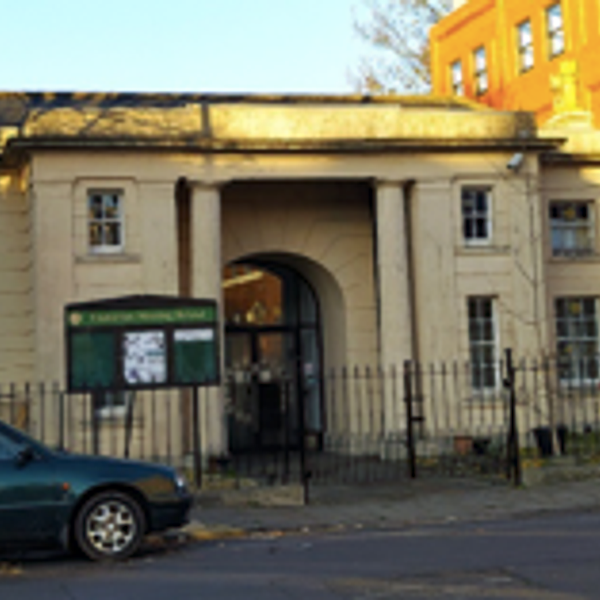Walking Words: Hamilton House via Stokes Croft to the Unitarian and Bearpit
room 6 ECHOES
Location: Bristol, City Of Bristol, England, United Kingdom
Hamilton House to the Unitarian via Stokes Croft and the Bearpit
Poets: Pete Weinstock / David C Johnson
Stokes Croft
The road takes its name from John Stokes, mayor of Bristol in the late 14th century.His will recorded the area as "Berewykse Croft in Redeland", while the will of Nicholas Excestre, who died in 1434, named it "formerly John Stoke's close". It runs through the historic manor of Barton, which was recorded in the Domesday Book and part of the City of Bristol since 1373.
Stokes Croft was predominantly rural until around 1700, being mainly used for market gardening. Urban development was first logged in the parish records of 1678, while St James Square, to the west of Stokes Croft, was laid out by around 1710. John Roque's map of Bristol 1750 shows the area built up and running north of a central courtyard between Stokes Croft, North Street and Wilder Street. Though industries were established on Stokes Croft during the 18th century, the road was not fully developed and built-up until around 1850. Construction of the Carriage Works at No. 104 began in 1859, while the City Road Baptist Church was built in 1861. The area was damaged badly in World War II, with many buildings destroyed on Stokes Croft and King Square.
St James' Fair
St James' Fair was an annual fortnight of excitement, adventure and entertainment for the people of Bristol. Beginning in the 13th century in and around the churchyard of St James, it originally took place during the feast of St James at the end of July, but by the 19th century it was held during the first two weeks of September.
It attracted traders and shows from all across the UK and overseas, which included, according to the exhibitors list, wild beasts, waxworks, flying coaches, peep shows, a camera obscura, air bathing, a revolving panorama, dwarves, giants, and even 'a learned pig'. Traders sold goods ranging from earthenware pots to silk ribbons, and there were food and drink stalls, theatres, and fair ground rides. Bush houses, unlicensed pubs identified by an evergreen garland or bush, were also extremely popular until they were outlawed in 1815.
The Echoes

The Turbo Island Dig
Poem by Pete Weinstock

The Unitarian
Poem by Pete Weinstock

Brunswick Graveyard
Poem by Pete Weinstock

Toby the Sapient Pig
Poem by Pete Weinstock

All the Fun of the Fair
Poem by David C Johnson

Background Music
5074 documentary by creativemediass
Discover more geolocated content in our apps.
Or start creating tours, treasure hunts, POI maps... Just let your imagination guide you.